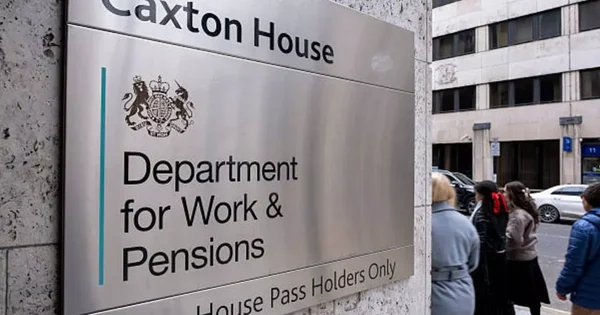
A new chapter in UK pension reform begins as the government introduces the Pension Schemes (Superfunds and Collective Schemes) Bill to Parliament. Announced on June 5, 2025, the legislation targets three major areas: automatic consolidation of small pension pots, boosting investment performance through larger funds, and giving workers better retirement income choices.
With over £27 billion in lost or dormant pensions, the Bill aims to reconnect savers with their money and offer a clearer, more stable path to retirement. The Department for Work and Pensions (DWP) estimates that over 20 million people stand to benefit.
Pensions Minister Paul Maynard MP called the reforms “a major milestone in making workplace pensions work harder for millions.” As more people switch jobs and accumulate small pots over time, the current system has become fragmented and inefficient. This Bill seeks to change that, for good.
What the Pension Schemes Bill Aims to Fix
One of the most pressing problems in the UK pension system is the proliferation of “small pots”, tiny pension accounts left behind when workers change jobs. The Bill proposes automatic consolidation of these pots, ensuring that when a worker starts a new job, their previous pensions are merged into their current scheme.
This change would dramatically reduce the number of forgotten pensions and make it easier for people to track their savings. Currently, there are over 12 million small pots, many of which risk being lost or ignored altogether. Auto-consolidation could save employers time, reduce admin costs, and empower employees to take control of their long-term savings.
Investing in Bigger, Better Pension Funds
The Bill also promotes the creation of larger pension funds, giving schemes more buying power and the ability to make long-term investments in UK infrastructure and business growth. This move is part of the government’s “Mansion House Reforms”, which aim to unlock billions in investment capital from pensions and channel it into national economic growth.
Larger schemes tend to have lower fees and better performance. According to the government, schemes that scale up can deliver up to 46% more retirement income due to compounding and fee efficiencies.
The Bill encourages the development of “Superfunds” consolidated pension funds that manage assets for multiple employers under a regulated structure. These superfunds are seen as a tool to provide better outcomes for both employers and members.
Making Retirement Choices Easier
Another focus of the legislation is improving the “decumulation” phase, that’s the part where savers start drawing an income from their pension. At the moment, many workers find the available options confusing or suboptimal. This Bill proposes mechanisms that help people easily access suitable retirement products without needing complex financial advice.
Providers would be encouraged to offer “default decumulation pathways” tailored to savers’ needs, so individuals can benefit from predictable, sustainable income without navigating a maze of jargon and products. These reforms aim to make the UK pension system more user-friendly, financially efficient, and better aligned with modern working patterns.

Regulation for Superfunds and Collective Schemes
The Bill also strengthens the legal framework around defined benefit superfunds and collective defined contribution (CDC) schemes. CDCs offer a middle ground between traditional pensions and modern defined contribution plans by pooling risks and smoothing returns across members.
The Bill gives The Pensions Regulator (TPR) more tools to authorise, supervise, and, if necessary, intervene in the operation of these schemes. This regulatory oversight is key to ensuring savers are protected and employers remain confident in using them. The government sees these schemes as critical to innovation in the UK pensions landscape, providing options that better balance risk and return.

Conclusion
The Pension Schemes (Superfunds and Collective Schemes) Bill represents one of the most significant steps forward in UK pension policy in years. By consolidating small pots, promoting larger funds, and simplifying retirement decisions, the government hopes to deliver real value to over 20 million workers.
These reforms align with broader economic goals to boost domestic investment and modernise the UK’s financial infrastructure. For savers, it means less admin, more visibility, and potentially thousands more in retirement income. For employers and pension providers, it introduces clarity and structure in a fast-changing sector.
As the Bill progresses through Parliament, stakeholders from all sides including pension providers, unions, and consumer advocates, will watch closely to ensure the promised benefits reach savers without unintended consequences. But for now, the message is clear: the UK is getting serious about making pensions work better for everyone.
Frequently Asked Questions
What is the Pension Schemes Bill 2025?
It’s a new piece of legislation introduced in June 2025 to improve UK workplace pensions by consolidating small pots, increasing fund efficiency, and simplifying access to retirement income.
How will auto-consolidation of pensions work?
When you change jobs, your old workplace pension will be automatically transferred into your new scheme, unless you opt out, making it easier to manage your savings.
What are pension superfunds?
Superfunds are large, pooled pension schemes that manage assets from multiple employers, aiming to deliver better value through scale and regulation.
How will the reforms affect retirement income?
The reforms could increase pension returns by up to 46% for some savers by reducing fees and enabling better investments in larger funds.
When will the Bill become law?
The Bill was introduced in Parliament in June 2025. If it passes through all stages successfully, it could become law within the next 12 months.









